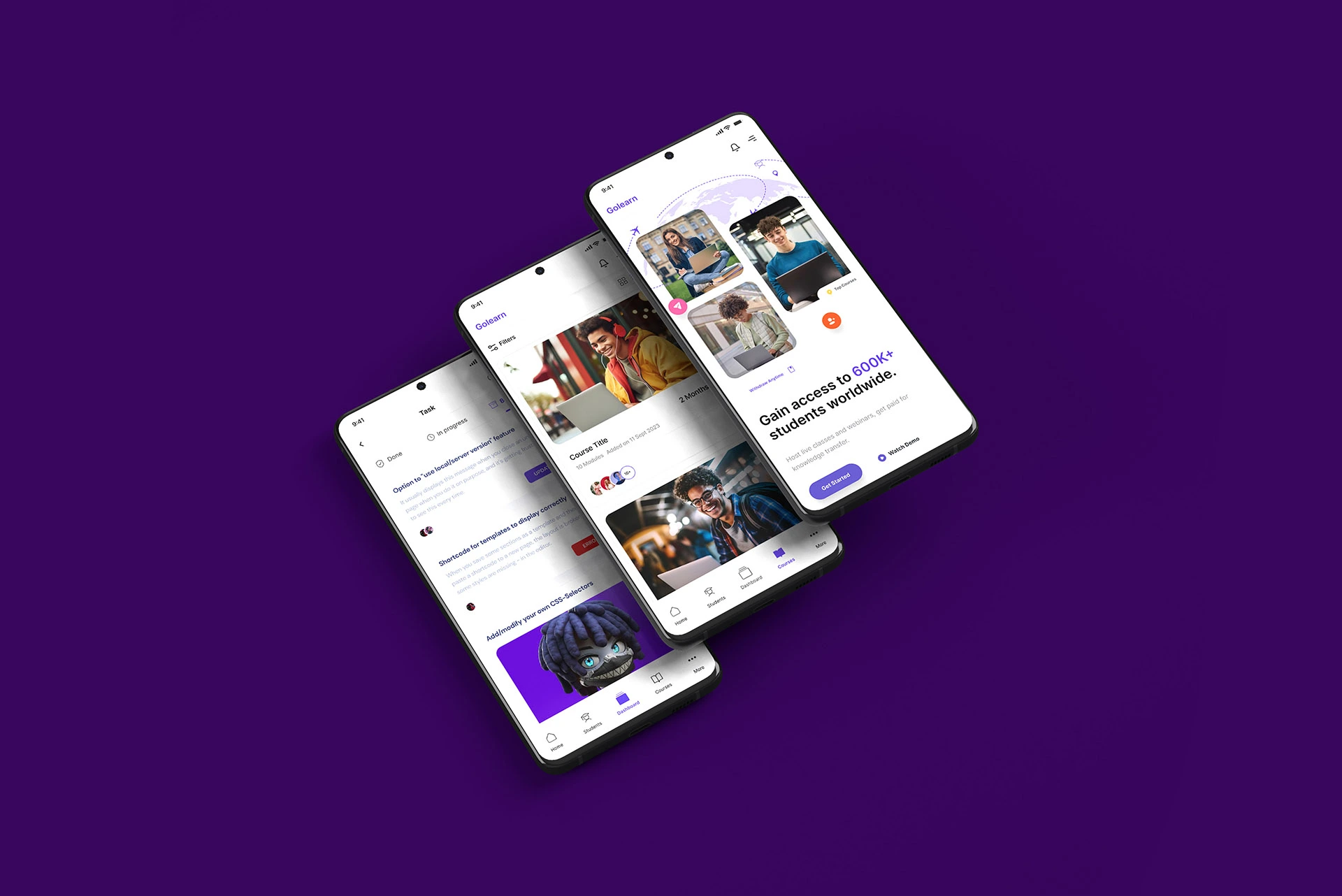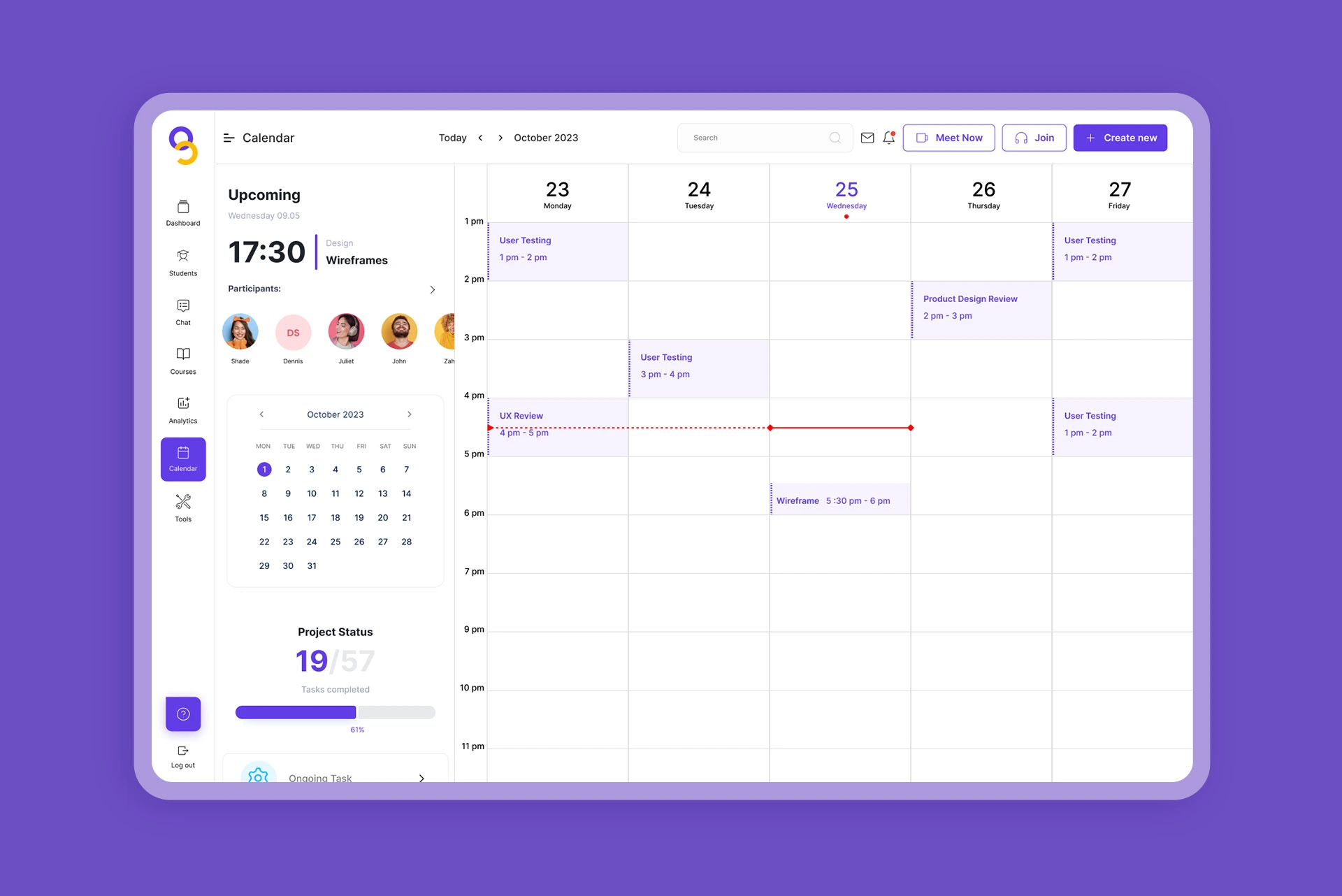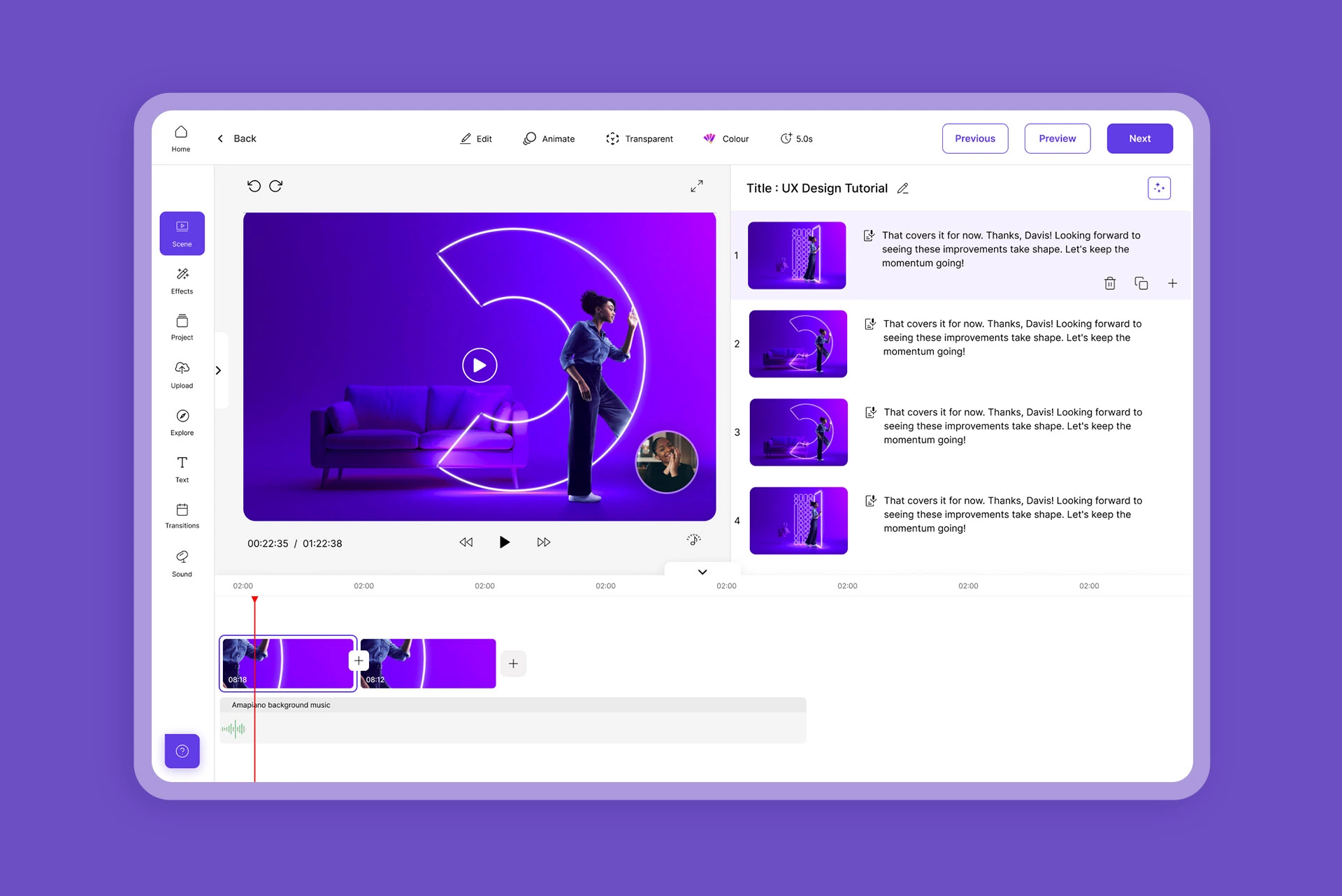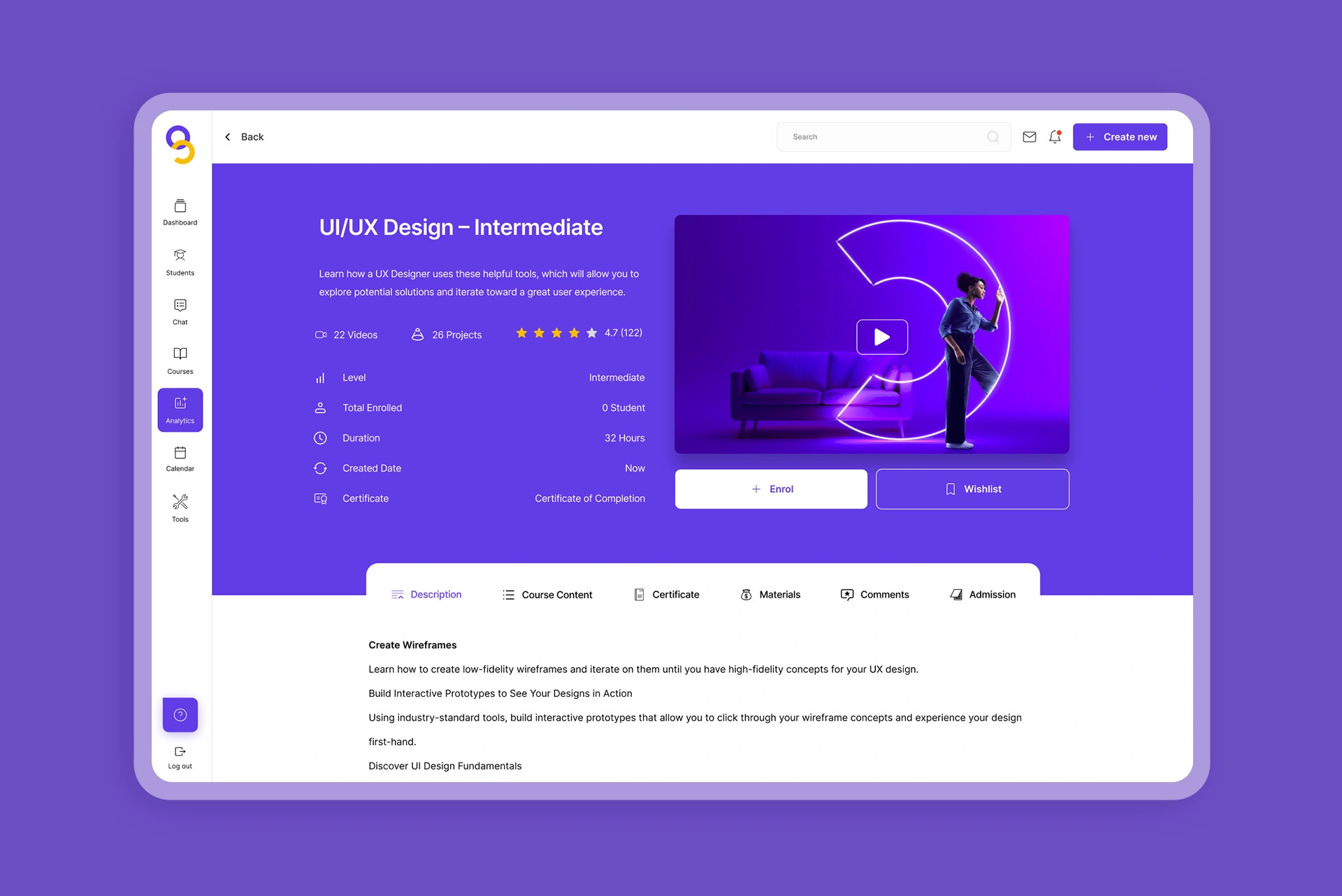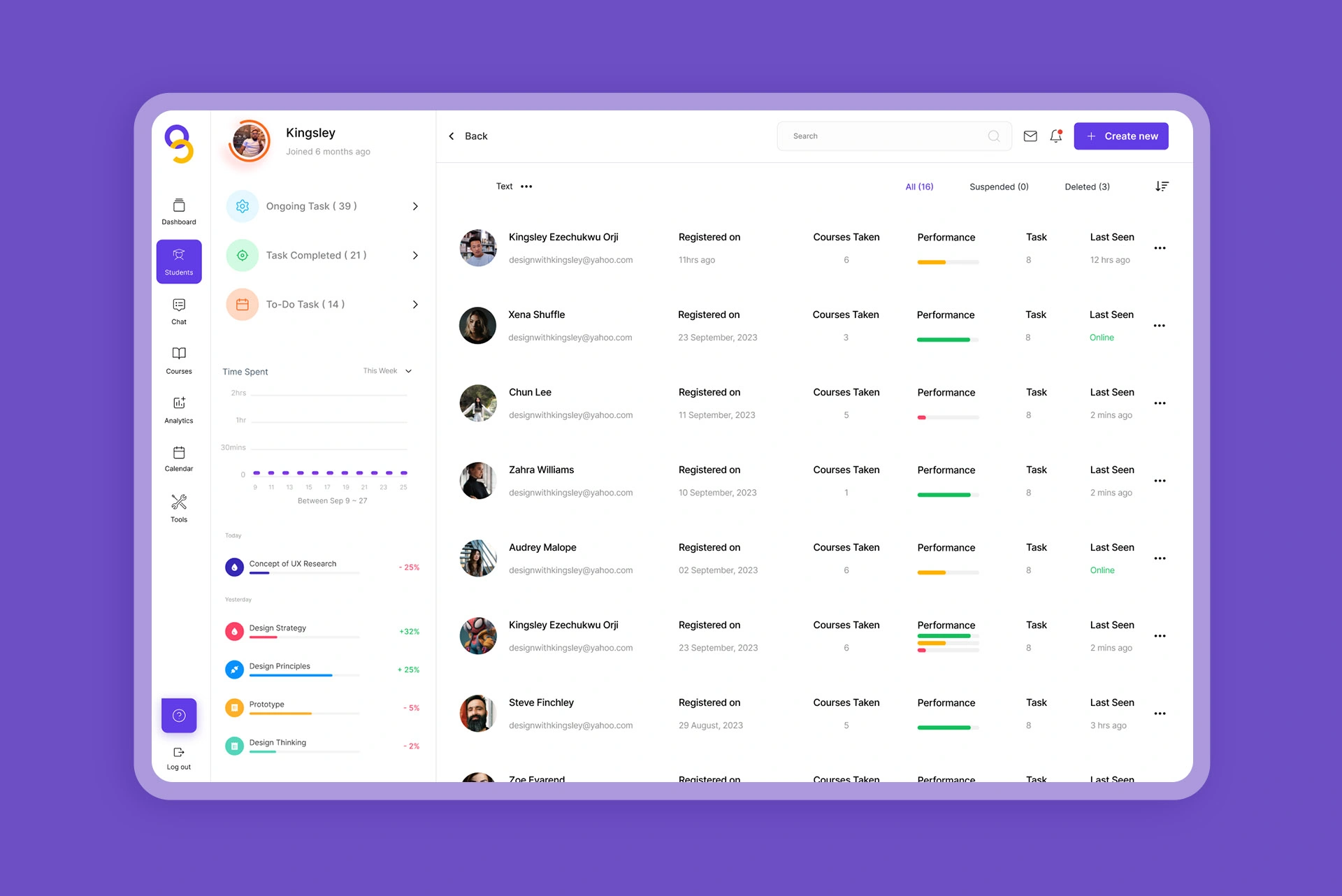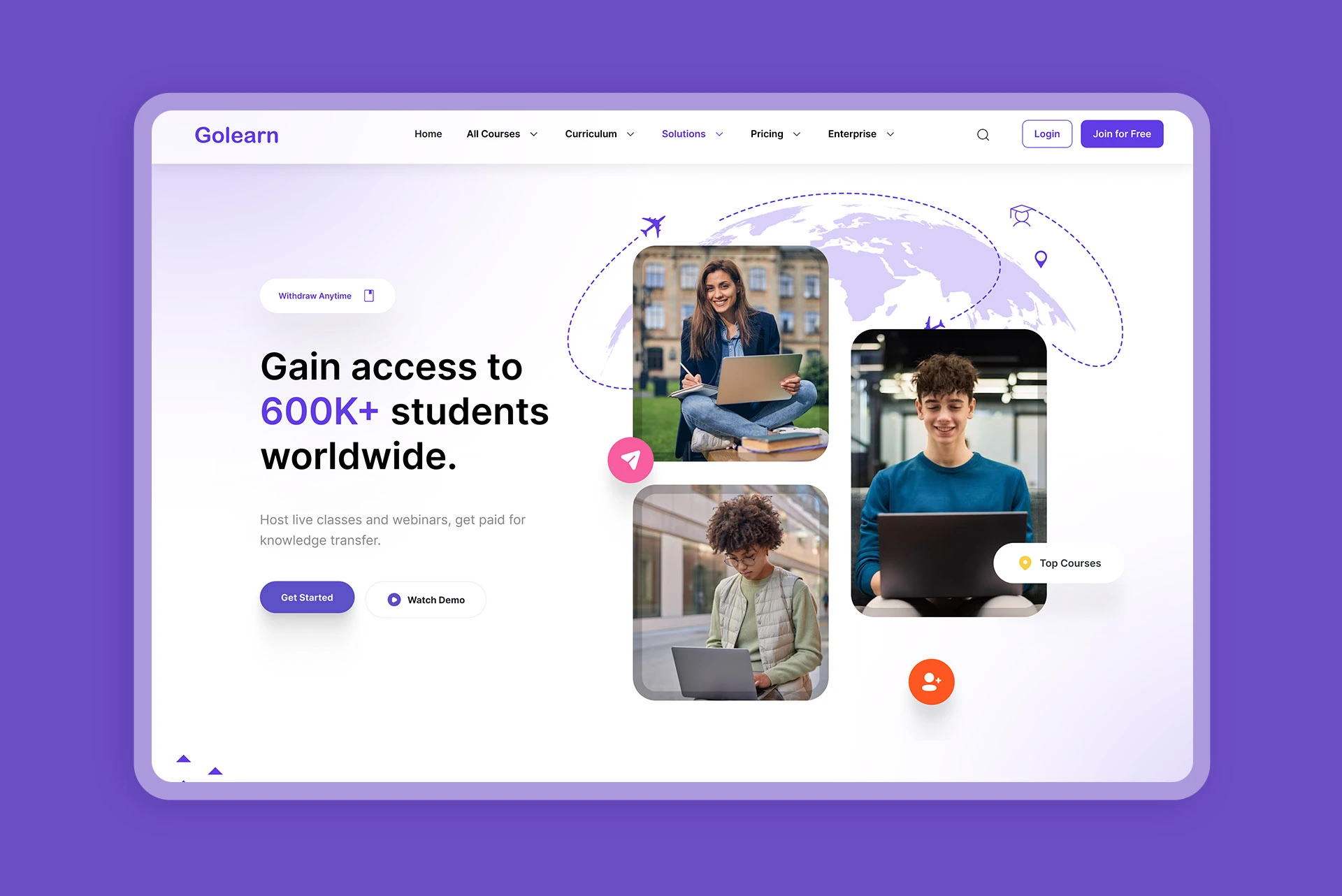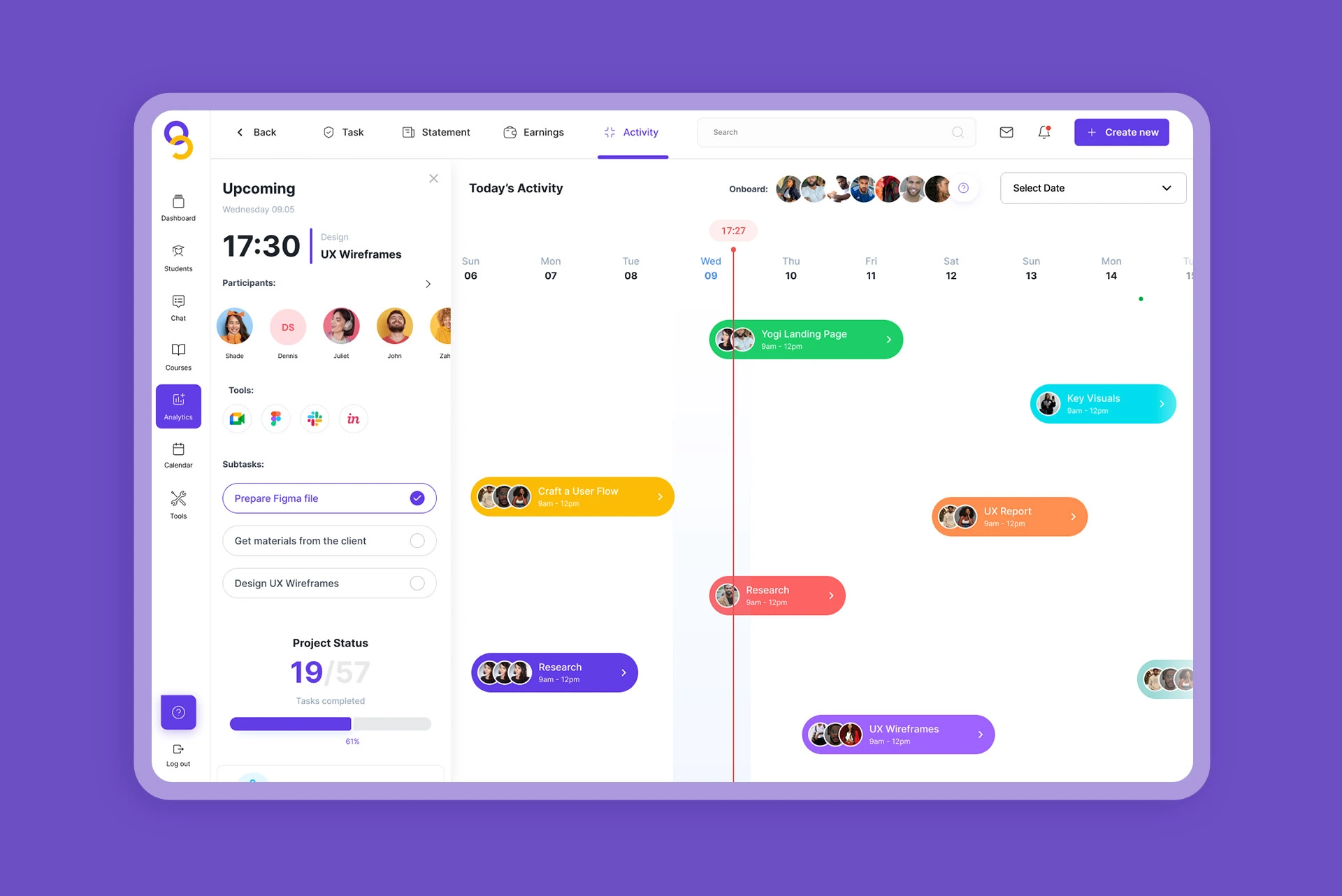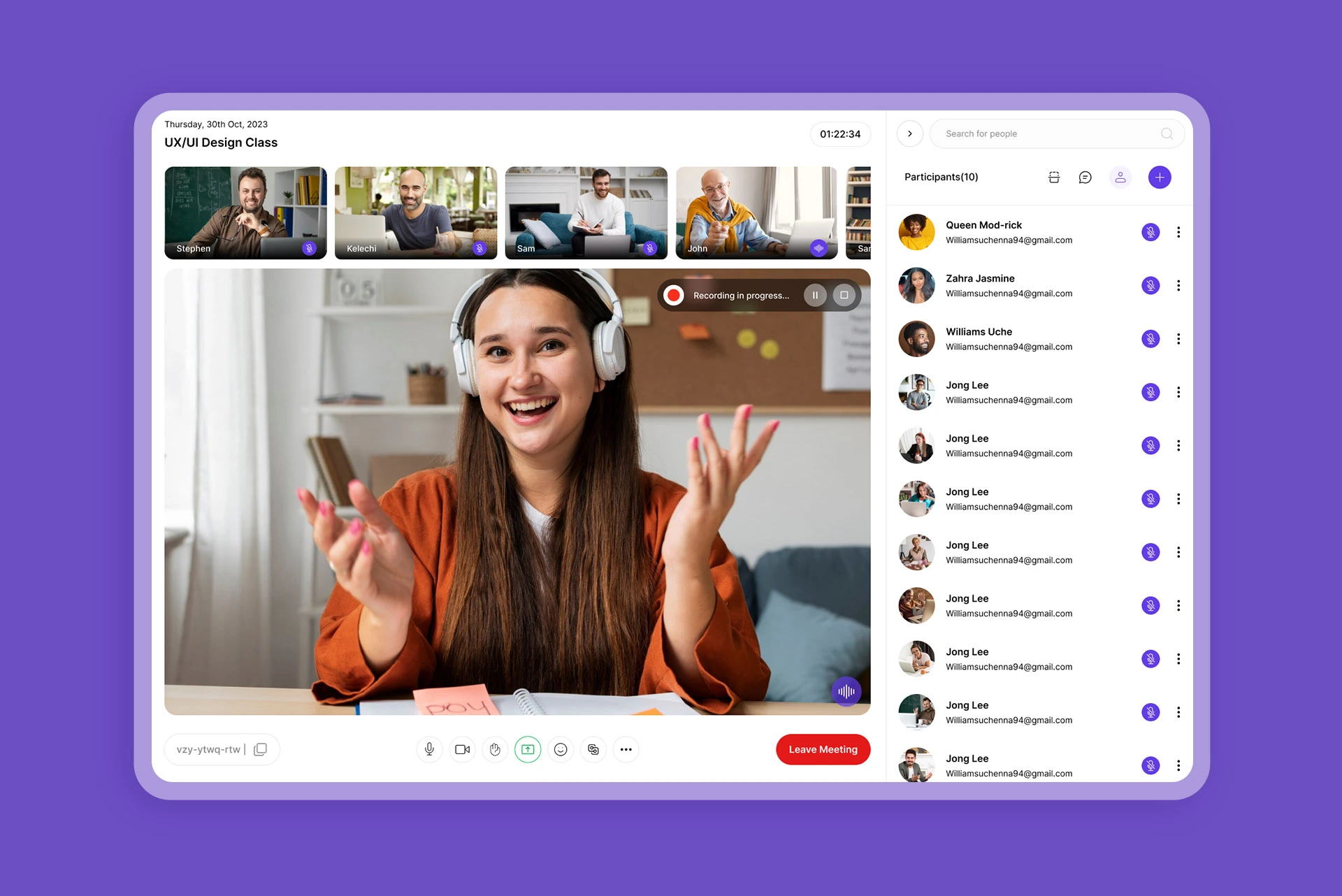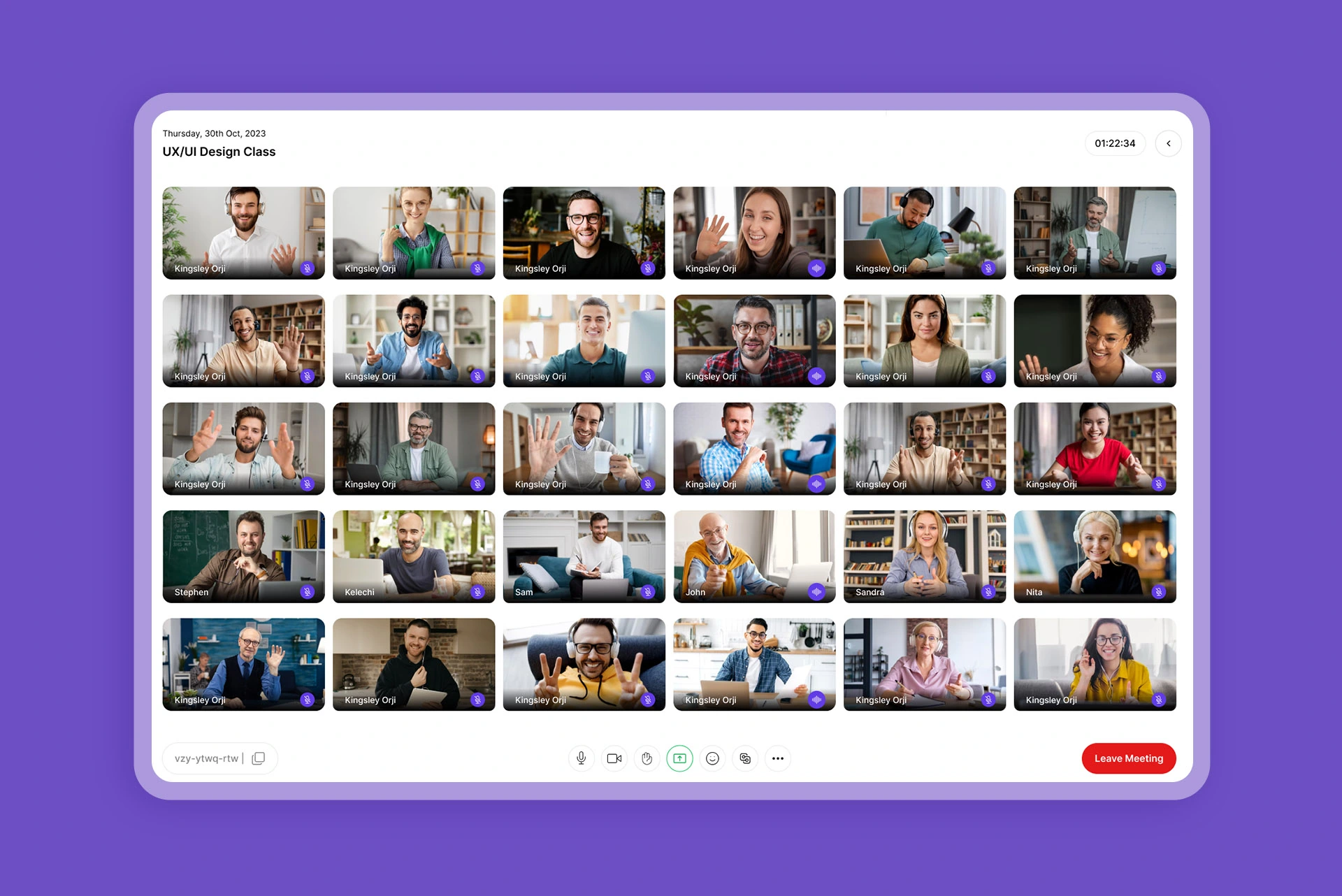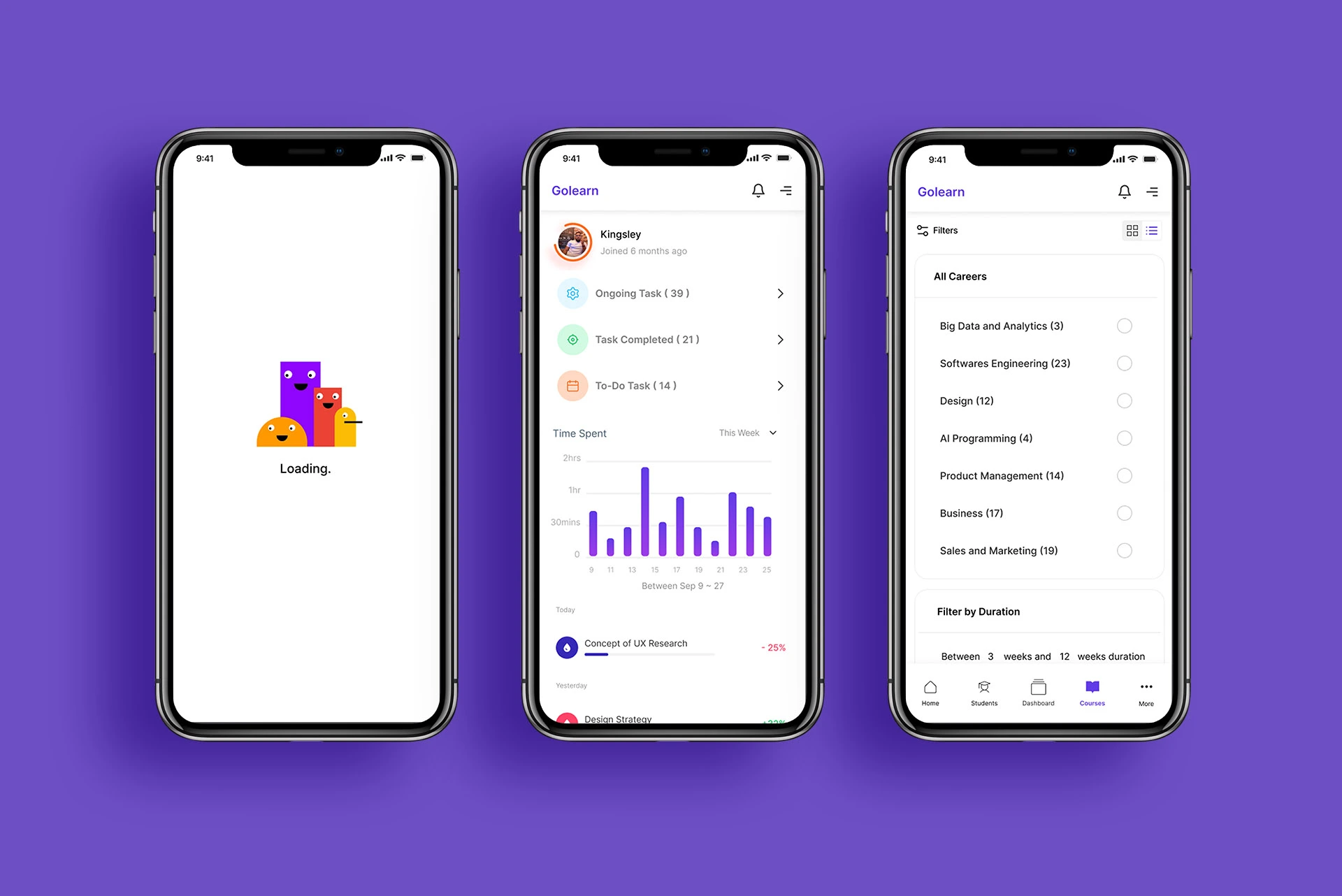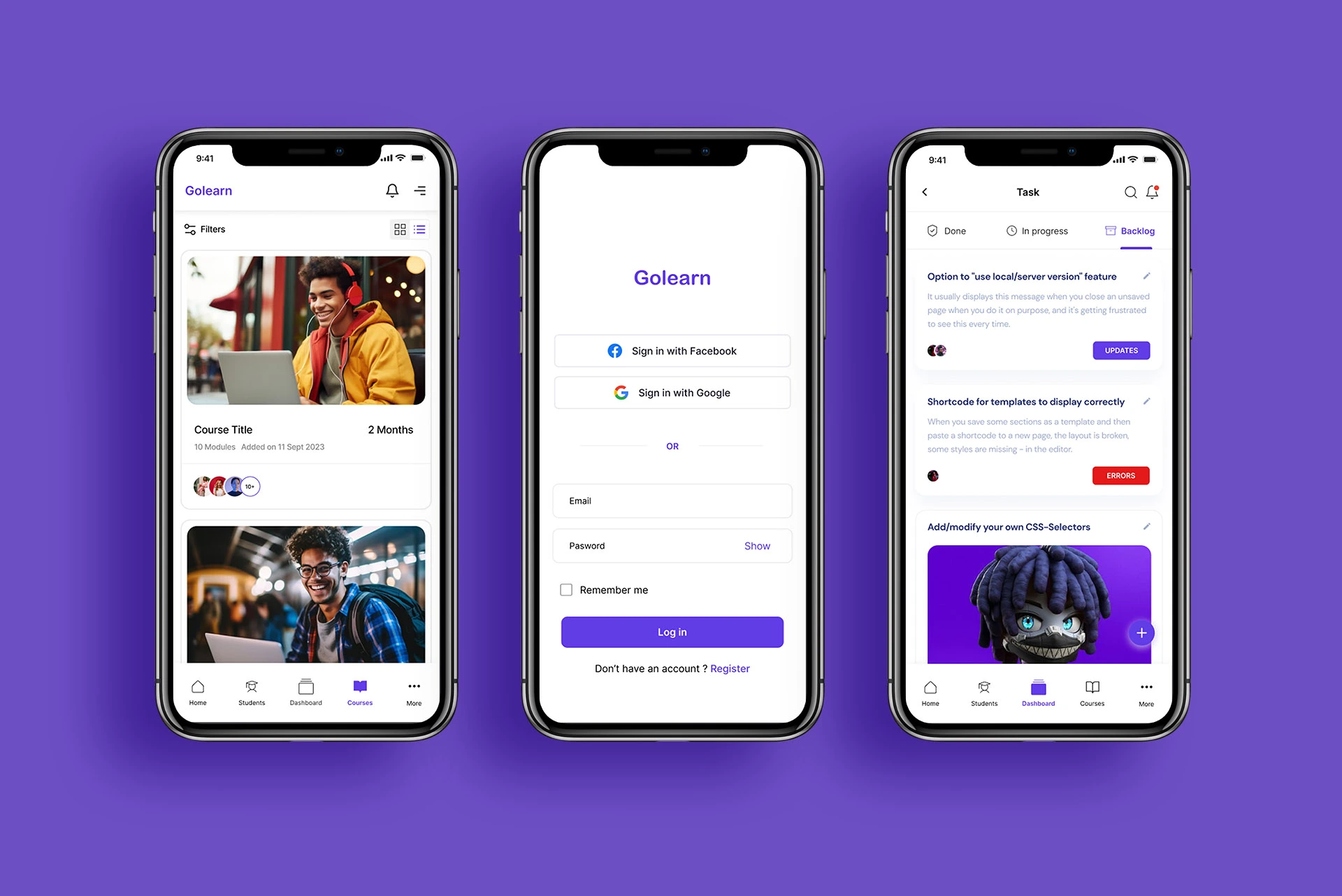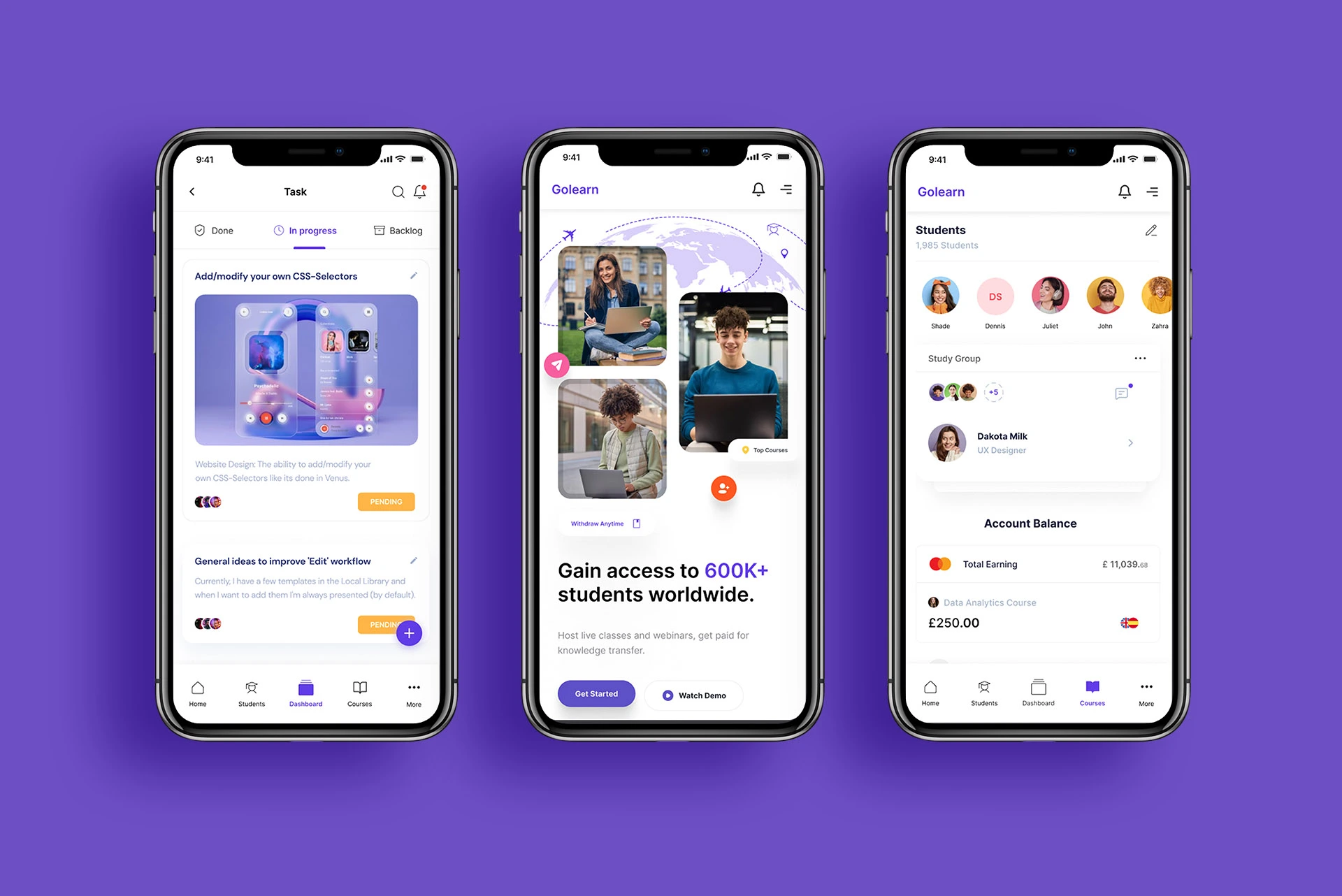Project Overview
The Product
Golearn is an innovative online learning platform designed to revolutionize the educational experience by integrating comprehensive online courses with powerful Student Relationship Management (SRM) tools. This project aims to provide a holistic solution for learners and educators, offering a dynamic learning environment coupled with efficient management of Students interactions.
My Role
Senior UX/UI Designer
My Responsibilities

Project Goal Outline
1. Objective:
The primary objective of the Golearn project is to design a cutting-edge online learning platform that would have a Task Management systems for instructors to assign live projects to students, Messaging features to aid easy communication among students and instructors, Dashboards, Video Editing tool for Instructors to record and upload video tutorials, Report Builder with loads of template, and Event Management tool for scheduling live classes, webinars and meetings among the students and the instructors within the GoLeaern app.
2. Specific Goals:
Simplify User Interface: Design a product that would have a good UI complexity to make the app more accessible to users of all ages and tech-savviness levels.
- Holistic Learning Experience: Provide learners with a holistic and personalized learning experience that goes beyond traditional online courses.
- User Testing and Feedback: Continuously gather user feedback through testing sessions and surveys to inform design iterations.
- Increase User Engagement: Create features that encourage consistent user engagement.
- Efficient Student Relationship Management: Implement SRM tools to efficiently manage user interactions and communications.
- Ongoing Improvements: Establish a plan for continuous improvement post-launch by analysing user data.
3. Key Metrics:
Daily Active Users (DAU): Monitor DAU to gauge the app's popularity and engagement levels.
Course Engagement: Enrolment rates for each course. Number of active learners per course. Average time spent on courses.
Learning Path Effectiveness: Completion rates for adaptive learning paths. User feedback on the relevance and effectiveness of recommended learning paths.
Community Interaction: Number of posts and discussions in community forums. User engagement levels within discussion forums. Positive sentiment analysis of community interactions.
Certification and Achievement: Number of certifications issued. Rate of certification completion. Instances of certifications shared on professional networks.
CRM Efficiency: Number of user interactions tracked by CRM tools. Response time to user inquiries or concerns. Percentage of users with complete and updated profiles.
Analytics and Decision-Making: Real-time analytics on user behaviour, course popularity, and community engagement.
Security and Compliance: Regular security audit results and any identified vulnerabilities. Compliance with data protection and privacy regulations.
Technological Performance: System uptime and reliability. Page load times for critical user interactions. Feedback on the responsiveness of the platform across different devices.
Financial Metrics: Revenue generated from course enrolments. Cost per acquisition (CPA) for acquiring new users.
User Satisfaction: Net Promoter Score (NPS) based on user feedback. User satisfaction surveys and ratings. User testimonials and reviews.
Scalability and Growth: Platform growth in terms of user base and course offerings.
4. Timeline:
● Phase 1 (Research and Planning): 4 weeks
● Phase 2 (Design and Prototyping): 16 weeks
● Phase 3 (Testing and Iteration): 4 weeks
● Phase 4 (Development): Ongoing
5. Deliverables:
● User Personas
● User Journeys and User Flows
● Information Architecture (IA)
● Wireframes and Prototype
● Mockups
● Style Guides
● Usability Test Plans and Usability Test Reports
● Accessibility Guidelines
● Interaction Design Specifications
● Visual Design Assets (High-resolution images, icons, and other graphical elements used in the final design.)
● Final Design Deliverables ( The combination of design work, including the approved high-fidelity designs, assets, and any necessary documentation for handoff to development teams.)
6. Success Criteria:
● Achieve a 20% increase in course enrolments within the first quarter.
● Maintain an average user engagement time of at least 1 hour per session.
● Receive an average user satisfaction rating of 4.5 out of 5 in post-course surveys.
● Increase conversion rates by 15% for key actions (e.g., sign-ups, purchases) within three months.
● Achieve a 20% decrease in bounce rates and a 15% increase in average session duration.
● Ensure the website is fully responsive, with 95% of users reporting a positive experience on different devices.
● Attain a 25% increase in user adoption compared to the previous version
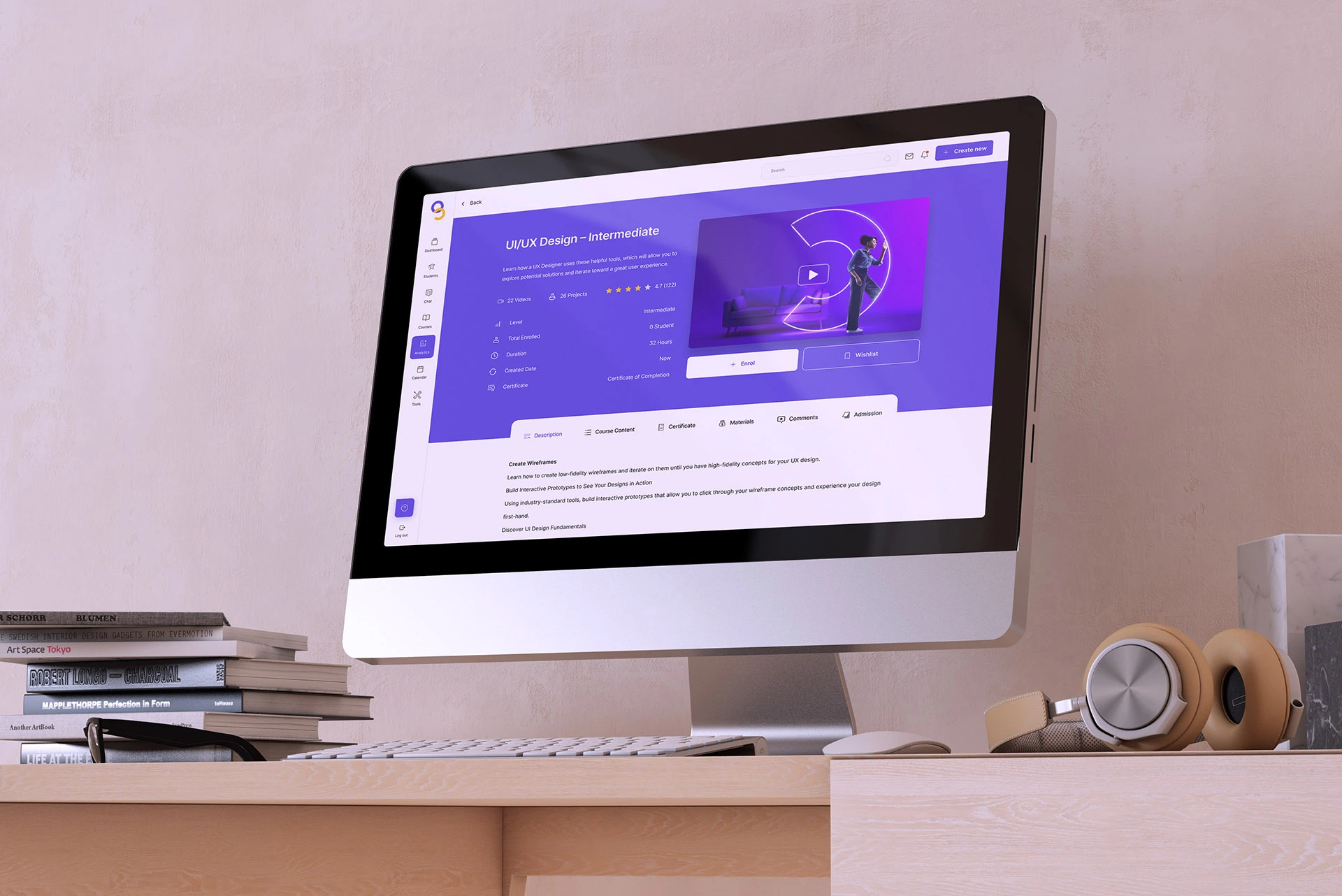
App Preview
Live Figma Prototype
Try the live figma prototype of the app
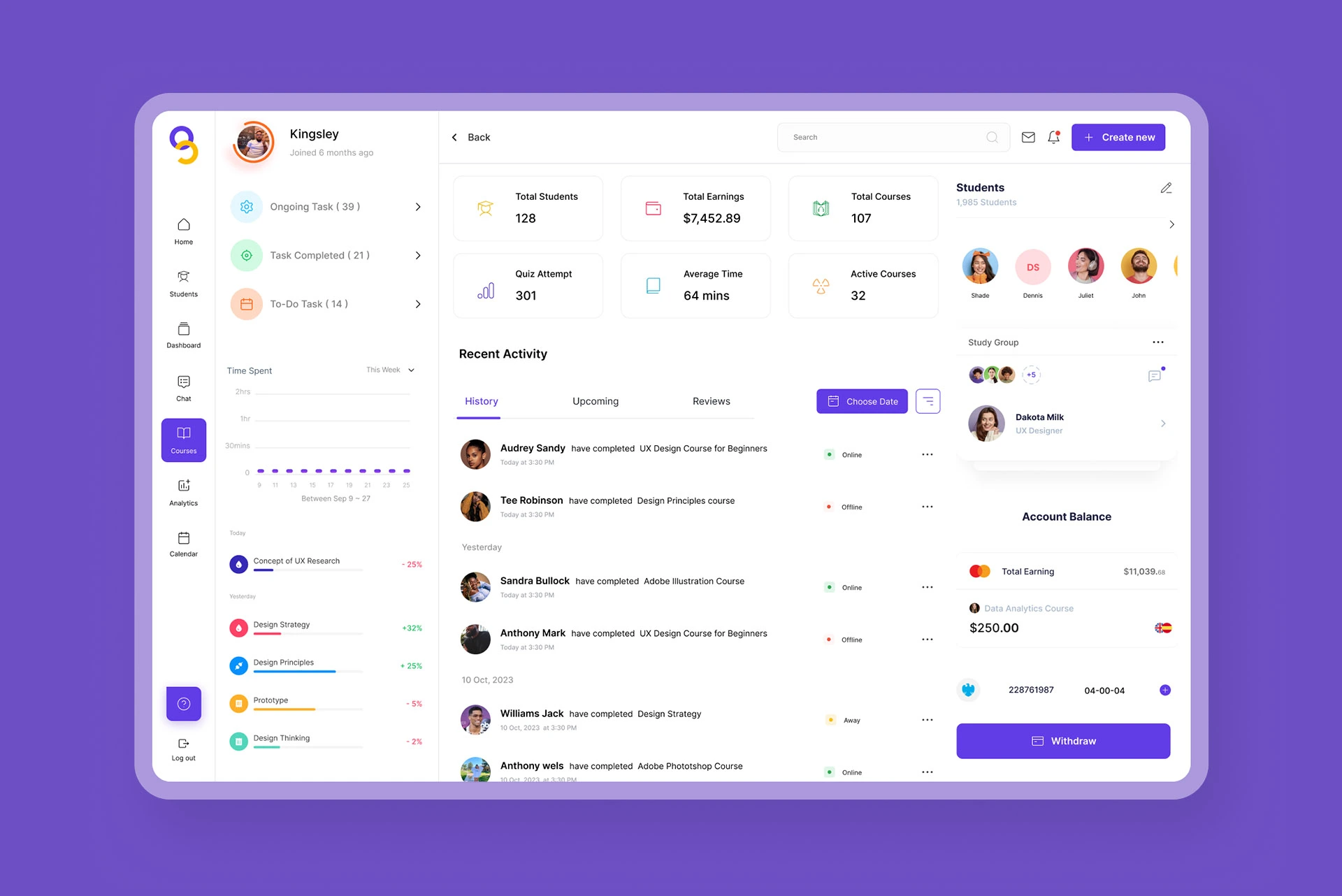
Usability Testing
Study Overview
Objective: The primary objective of the usability study is to evaluate the redesigned user interface and features of the GoLearn app to ensure that it provides a satisfying user experience.
Participants: I organised a diverse group of 10 participants representing the target audience of the GoLearn web app , including both genders and a mix of age groups.
Date and Location: The usability study took place over the course of three weeks on Google meet. Testing sessions was scheduled from 22nd Jan - 18 Feb 2022.
Study Facilitators: The study was facilitated by me and two other product managers based in United State and Canada.
